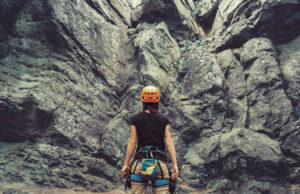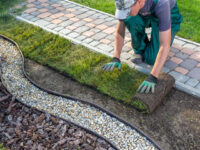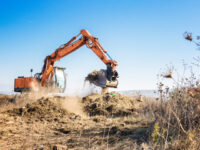Climbing – A Sport That Focuses on Technique and Commitment
Alta Climbing is a sport that focuses on technique and commitment. It is not easy to learn, but the effort pays off. The best way to improve your climbing is to work with a professional.

Climbing is a dangerous sport, so safety should be taken seriously. Make sure that you have a plan in case of an accident. Also, wear a helmet.
Climbing is an intense and physically demanding sport. It requires a great deal of concentration, dedication and physical/mental strength. It has become increasingly popular in recent years, especially among young people. The climbing community is a tight-knit and supportive group, where athletes are eager to help each other. This is an excellent way to meet new people and build strong friendships. It is also a great way to build confidence and improve your fitness level. Moreover, climbing is an exciting and rewarding sport that helps to reduce stress.
There are many different types of climbing, and each one has its own unique challenges and rewards. Some of the most popular include: bouldering, lead and speed climbing. While some of these are more dangerous than others, they all require a high level of skill and commitment. Most climbers start at a gym, and they will usually befriend other climbers who are also members of the facility. These friends can help them learn the ropes of the sport, and they can be a valuable resource in their journey to becoming a world-class climber.
Some climbers prefer to challenge themselves on a rock face without the use of equipment. This is called free soloing or “base juggling”. It can be very dangerous, but it is also a lot of fun. It is important to note that base juggling is not considered a true form of climbing, and it is illegal in most countries.
Other climbers are more interested in a safe and controlled environment. These climbers participate in sport climbing, a discipline that is similar to ice hockey or tennis. In this event, athletes compete against each other to see who can climb the most difficult route within a certain time limit. The climber who successfully completes the route is the winner.
Compared to traditional outdoor climbing, sport climbing is more regulated and safer. Invented in the 1980s, this type of climbing allows participants to clip their safety rope into pre-placed bolts instead of screwing and hammering them in on the way up. This method also allows for easier access to the top of the route.
It’s a hobby
Climbing is a sport, a hobby and an activity that can take place indoors or outdoors, on natural or man-made surfaces, such as rocks, ice, snow, and even buildings. It can be as simple as scaling a rock cliff in your backyard or as complex as summiting an 8,000-meter high mountain halfway around the world. It is often categorized by the surface or terrain that it is on, the amount of specialized equipment required, and the degree of challenge involved.
Climbers of all ages, genders, and backgrounds enjoy climbing. It can be as easy as walking up a flight of stairs or as difficult as free climbing a route that has never been done before, requiring a combination of strength, endurance, flexibility and balance. It is also possible to do a variety of different climbing styles, such as trad climbing (placing and removing your own protection on the route) or a gym-style sport called lead or sport climbing, where the climber follows pre-bolted routes.
Mountaineering is the granddaddy of all climbing, involving the ascent of mountains, peaks and other large topographical features. This involves a mix of challenges, such as dealing with altitude and weather, as well as the technical difficulty of ascending the rock, snow or ice. There are many different styles of mountaineering, including climbing on glaciers and via fixed ropes, such as in aid climbing.
The most common form of climbing is free climbing, where the climber uses a rope for safety but does not use it to support their weight on the way up. This is a very challenging form of climbing, and it requires a lot of practice to become proficient at. Many climbers consider a successful ascent of a difficult free climbing route a “send,” and some climbers have been known to attempt a particular hard route dozens of times before sending it.
Another popular type of climbing is ice climbing, which involves ascending ice using specialized equipment. Ice climbers wear insulated boots, which they put on over their shoes, and they hold onto ice tools with sharp metal picks that they swing into the ice. Some climbers also climb a mixture of rock and ice, which is known as mixed climbing.
It’s a community
Climbing is a fun and rewarding sport, but it can also be a community that promotes mental and physical resilience. The sport challenges climbers to think outside the box, which is an essential skill for life. It can be intimidating for new students who aren’t sure what to expect, but Dane Siegfried, coordinator of the rock wall at the Wade King Student Recreation Center, says that everyone is welcome. He offers tips to beginners and encourages them to try more challenging routes.
Climbers come from diverse backgrounds and often find that they have a lot in common. Many women who have never been outdoors feel drawn to climbing because it is a way to connect with nature in a safe and supportive environment. Climbing can help women build confidence and self-esteem by overcoming fear and setting personal goals. It also provides a good aerobic workout and strengthens the entire body.
Aside from the physical benefits, climbing is a great way to build social relationships and make friends. The climbing community is supportive and welcoming, and most climbers are happy to offer advice to newcomers. Climbers also work together and support each other, creating a supportive atmosphere where everybody is encouraged to improve.
Unlike other cardio exercises, climbing requires both strength and endurance, which means it’s a great full-body workout. It also burns calories at rates comparable to high-intensity workouts like spinning and resistance training. In addition, climbing builds muscle and endurance while improving balance and flexibility. It also encourages goal-setting and achievement, which is especially beneficial for women with a busy lifestyle.
Despite its reputation as a male-dominated sport, climbing has become a popular activity for women. In addition to the physical benefits, climbing helps women overcome social barriers and develop resilience. The sport’s unique combination of adventure, fitness, and community make it an attractive choice for women who are looking to find a balance in their lives.
It’s a challenge
Climbing is a demanding sport that requires physical strength and agility, as well as mental fortitude. The challenge of overcoming advanced routes cultivates a sense of accomplishment and builds resilience that extends beyond the walls of the gym. It also develops problem-solving skills that help climbers navigate challenges in the real world, such as managing fear on high walls and pushing through fatigue when every muscle protests.
While all climbing is challenging, some types of climbing are more difficult than others. Trad climbing, or “traditional” climbing, is a style that involves placing your own gear on the rock to protect yourself from falling. This type of climbing is often considered the purest form of the sport, but it can be dangerous if done incorrectly. Some trad climbers prefer to use fixed bolts instead of improvising with their own gear, but this method can be more limiting.
Another type of climbing is bouldering, which involves short ascents without a rope. Bouldering is a great way to work on body movement and strength before transitioning to roped climbing. It is also very social and has become a popular pastime for many people. Bouldering can be quite acrobatic and physically demanding, and it is important to have proper equipment and training before taking on this type of climbing.
Advanced rock climbing techniques like stemming, crack, and slab climbing require a level of finesse that can be challenging for beginners to master. These methods also challenge a climber’s ability to adapt to changing conditions, such as weather and altitude. Altitude sickness can be a serious issue for climbers who ascend to high elevations, and it is essential to acclimatize properly before attempting any mountainous climbs.
Climbing is not for everyone, but it is a fun and rewarding activity that helps build strength, balance, and endurance. It is also a social sport that can be enjoyed with friends, and it can lead to lifelong friendships. People who love climbing are some of the most fun and interesting people to hang out with, as they share a common interest in pursuing their next summit.






